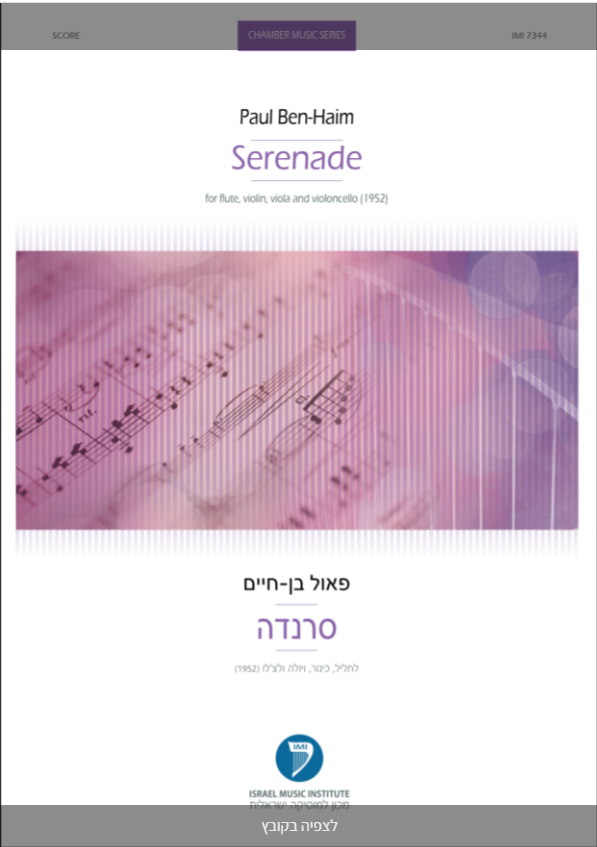Syrinx Music
Ben-Haim, Paul - Serenade for flute and strings
Ben-Haim, Paul - Serenade for flute and strings
Couldn't load pickup availability
Late Romantic and early 20th century European traditions meet Middle Eastern colours in the Israeli composer Paul Ben-Haim’s music. He was born Paul Frankenburger in Munich, Germany, and spent the early part of his career as a rising composer and opera conductor in Germany. Everything changed for him when the Nazis came into power. Blocked from work, he travelled in 1933 to Palestine on a tourist visa, changed his name to Paul Ben-Haim to get around British restrictions on working, settled in Tel Aviv, and began a long and distinguished career as a prize-winning composer, conductor, pianist, and teacher in what in 1948 became Israel.
In Germany Ben-Haim’s influences included Mahler and Strauss as well as Debussy and Ravel, whose Spanish-influenced music also was to inspire him. From his earliest days in Palestine, Ben-Haim led a group of émigré composers who were interested in fusing European traditions with the melodies and rhythms of Middle Eastern music. Soon after his arrival, he began a long-time musical relationship with the Yemenite folk singer Bracha Zefira, a promoter of ethnic songs. Ben-Haim worked for many years as her accompanist and arranger, absorbing her melodies. Plunged into a new, Middle Eastern musical world, he aimed to construct a distinctively Israeli national style infused with local musical traditions. His collaboration with Zefira led him to develop what became known as Israeli Mediterranean style, a mixture of Western compositional techniques and Middle Eastern melodies and rhythms.
You’ll hear Ben-Haim’s distinctive melding of Middle Eastern and Western elements in the Serenade for Flute and String Trio. It’s an engaging piece, filled with lyrical melodies, bracing rhythms, irregular meters, distinctive sonorities, and playful pizzicatos. The first movement – Con moto moderato, quasi allegretto – opens with the flute playing a sweet modal melody over dissonant chords. Throughout the movement, themes are exchanged and altered rhythmically and metrically, with pizzicatos adding lightness, and with the serenity of the opening measures prevailing at the end. Those patterns are repeated in the following two movements. In the second movement, Tranquillamente improvisando, the viola begins with a slow, haunting melody, which is passed back and forth among the strings while the flute dances lightly around the music. The pace quickens as the flute begins to improvise over the strings’ syncopated pizzicatos, in an increasingly energetic middle section that rises in tension before an abrupt return to the tranquillity of the opening. This mixture of soulful Middle-Eastern melodies and puckish outbursts continues in the witty third movement, Andantino comodo e cantabile, where the rhythms are syncopated and complex and the mood light-hearted. The ending, after many good-natured exchanges, is a serene recasting of the movement’s edgier opening melody – a satisfying conclusion to this very appealing Serenade.


